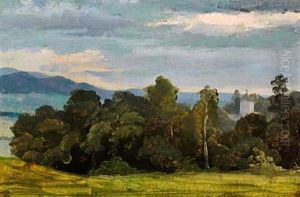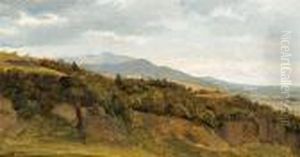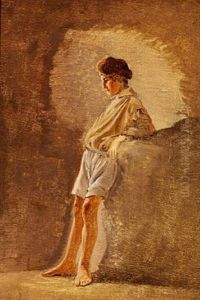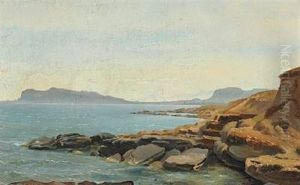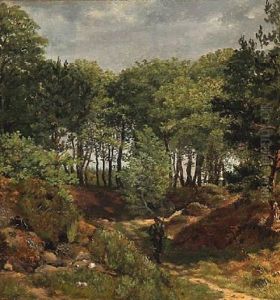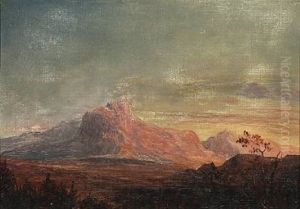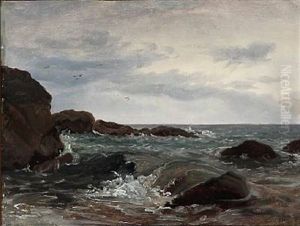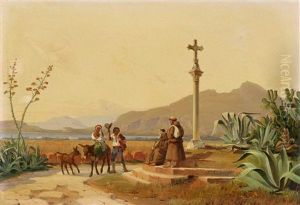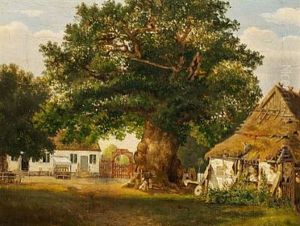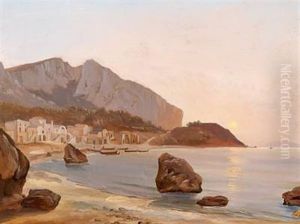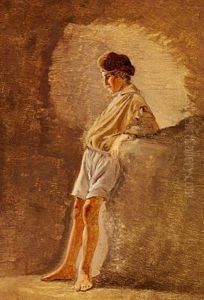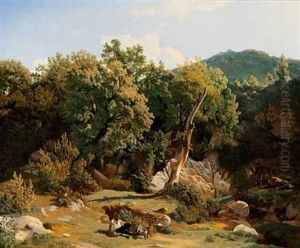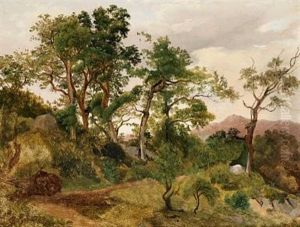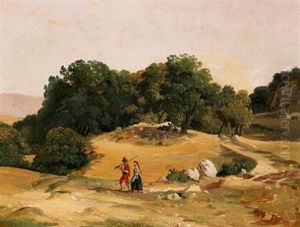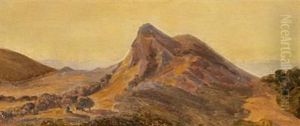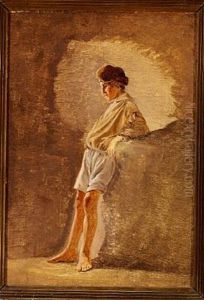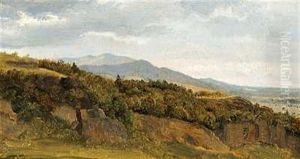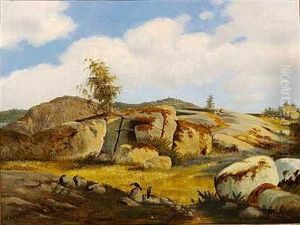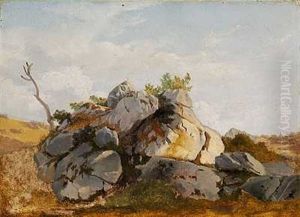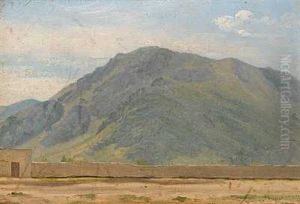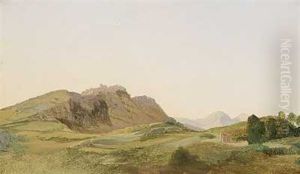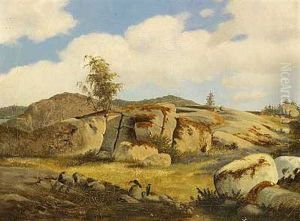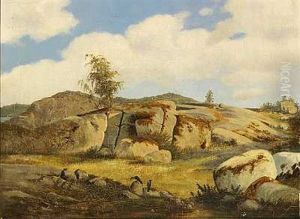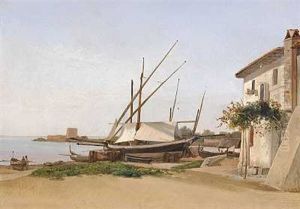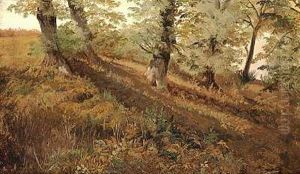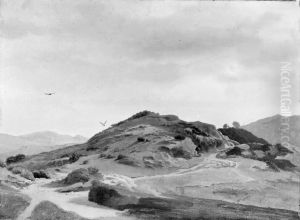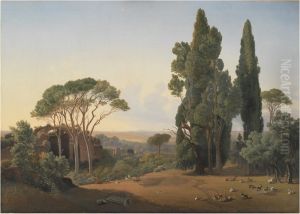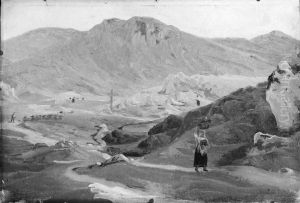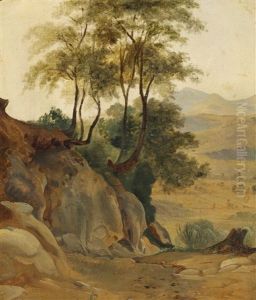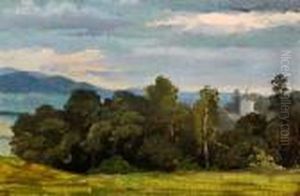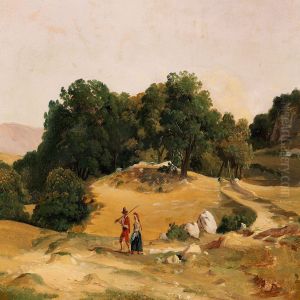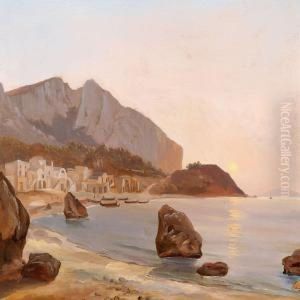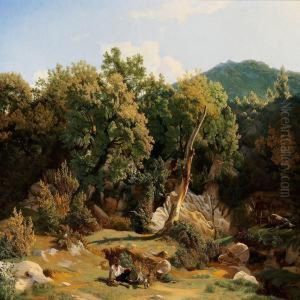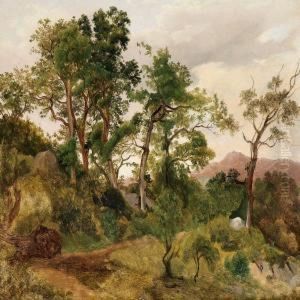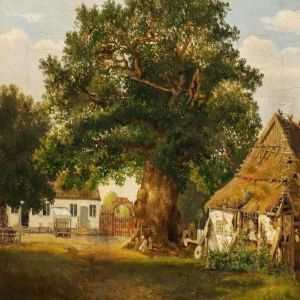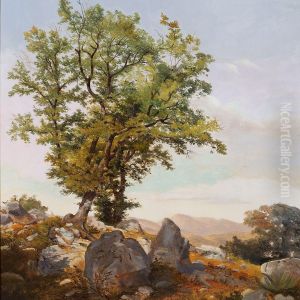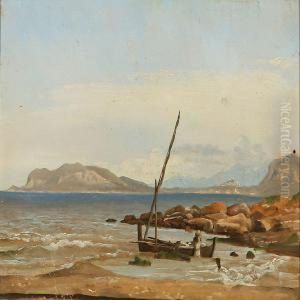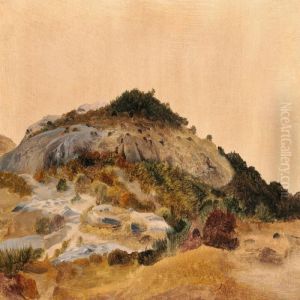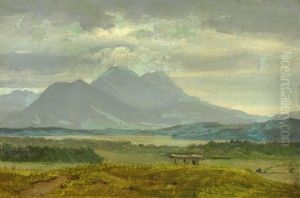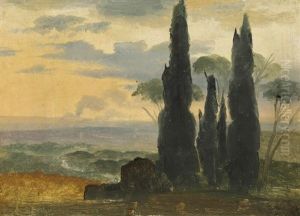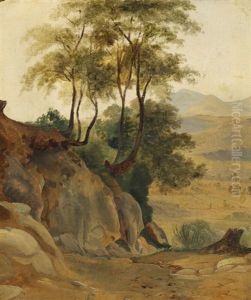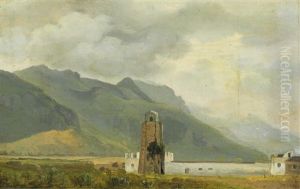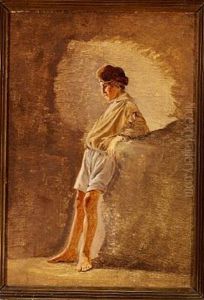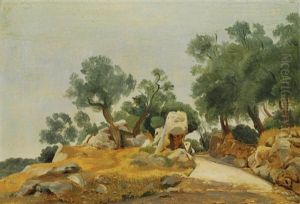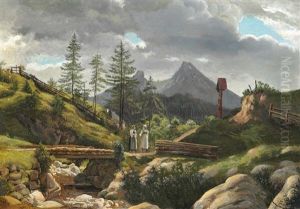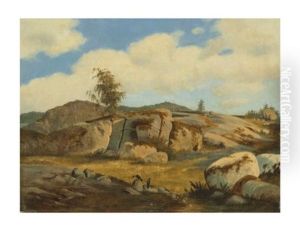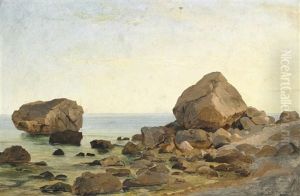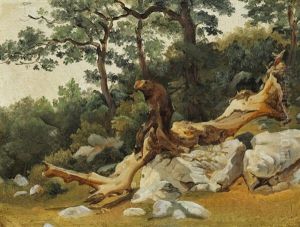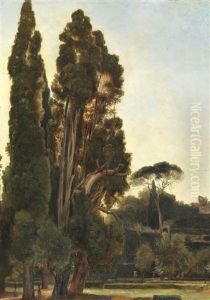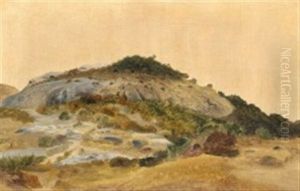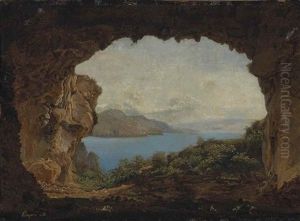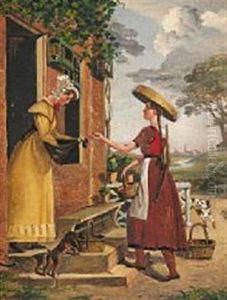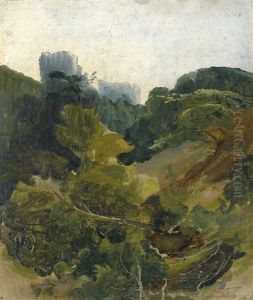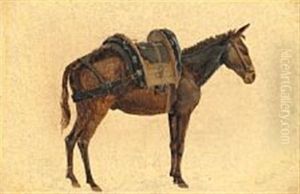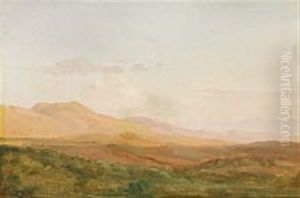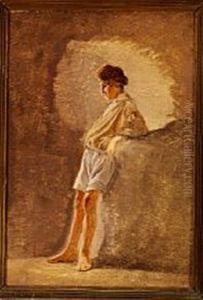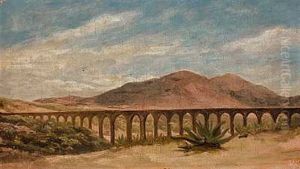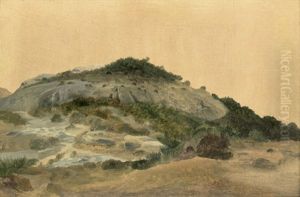Fritz Petzholdt Paintings
Fritz Petzholdt was a notable Danish landscape painter born on January 1, 1805, in Copenhagen, Denmark. He is recognized as an important figure in the Danish Golden Age of painting, a period of exceptional artistic achievement in Denmark during the first half of the 19th century. Petzholdt was known for his ability to capture the essence of the landscapes he painted, often imbuing them with a sense of romanticism and atmospheric depth.
Petzholdt showed an early interest in art and was trained at the Royal Danish Academy of Fine Arts in Copenhagen, where he studied under leading artists of the time such as Christoffer Wilhelm Eckersberg, who is often referred to as the father of Danish painting. Eckersberg's influence on Petzholdt was significant, instilling in him a keen eye for detail and a penchant for plein air painting, which involves painting outdoors to capture the natural light and scenery.
Despite his talent and the quality of his work, Petzholdt struggled to gain recognition in the Danish art scene. In an effort to further his artistic development and seek inspiration, he traveled extensively throughout Europe, visiting countries such as Italy, Switzerland, and Germany. His travels had a profound impact on his work, as he was exposed to a variety of landscapes and artistic styles.
Petzholdt's oeuvre includes a variety of landscapes that reflect his travels and his fascination with nature. His paintings often depict the Italian countryside, the rugged terrain of Switzerland, and the forests of Germany. His approach to landscape painting was characterized by a naturalistic style, with particular attention to the effects of light and atmosphere.
Tragically, Fritz Petzholdt's life and career were cut short when he died on August 21, 1838, at the age of 33, during a trip to Vienna, Austria. His premature death meant that his potential was never fully realized, and he did not live to see the wider recognition that his work would posthumously receive. Today, Petzholdt's paintings are considered an integral part of the Danish Golden Age and are highly valued for their contribution to the history of Danish art.
